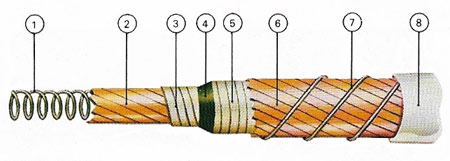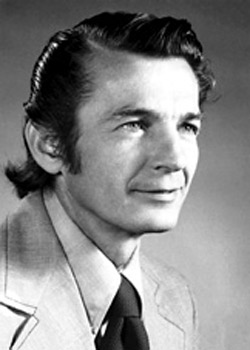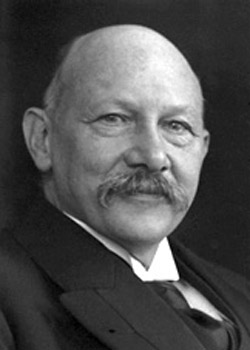superconductivity

A superconducting cable. (1) Helical conductor support. (2) Strips of inner conductor. (3) Inner conductor screen. (4) Lapped tape dielectric. (5) Outer conductor screen. (6) Strips of outer conductor. (7) Helical skid wires. (8) Helium pipe. Perfect conductors can be made out of alloys of metals (e.g. tin, lead, and niobium) at temperatures close to absolute zero (–273°C). Once electrons become detached from their parent atoms they move through the supercooled conductor, without slowing down or coming to rest, for indefinite periods. At such low temperatures the atoms in the metal vibrate only very slightly.
Superconductivity is a phenomenon that occurs in many metals, alloys, and other substances, at low temperatures, involving zero electrical resistance and perfect diamagnetism. In a superconducting material an electric current will persist indefinitely without any driving voltage and applied magnetic fields are exactly cancelled out by the magnetization they produce.
In type I superconductors, both these properties disappear abruptly when the temperature or applied magnetic field exceed critical values (typically 5K and 104 A/m), but in type II semiconductors the diamagnetism decay is spread over a range of field values. Large electromagnets sometimes use superconducting coils which will carry large currents without overheating, and the exclusion of fields by superconducting materials can be exploited to screen or direct magnetic fields.
Superconductivity was discovered by Hans Kamerlingh-Onnes in 1911, and is due to an indirect interaction of pairs of electrons via local elastic deformation of the metal crystal. The theory explaining it is called the BCS theory.
Pioneers of superconductivity
Giaever, Ivar (1929–)
 |
Ivar Giaever is a Norwegian-born US physicist. He shared the 1973 Nobel Prize in Physics with Brian Josephson and Leo Esaki for their research into tunneling effects in semiconductors and superconductors. Giaever extended the work of Esaki, who developed the tunnel diode, to superconductors, thus demonstrating new effects which led to a better understanding of superconductivity.
Kamerlingh Onnes, Heike (1853–1926)
 |
Heike Kamerlingh Onnes was a Dutch physicist who was awarded the 1913 Nobel Prize in Physics for his work on low-temperature physics. He discovered superconductivity and was the first to liquefy helium (1908). In the late 1880s, he began studying gases at low temperatures and in 1908, using a liquid-hydrogen cooling system, he liquefied helium and found its temperature to be 4°C (7°F) above absolute zero. He discovered that at this temperature some metals, such as lead and mercury, lose all electrical resistance and become superconductors.


